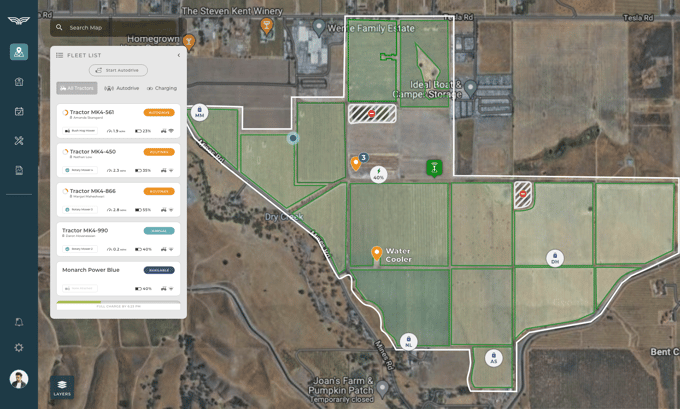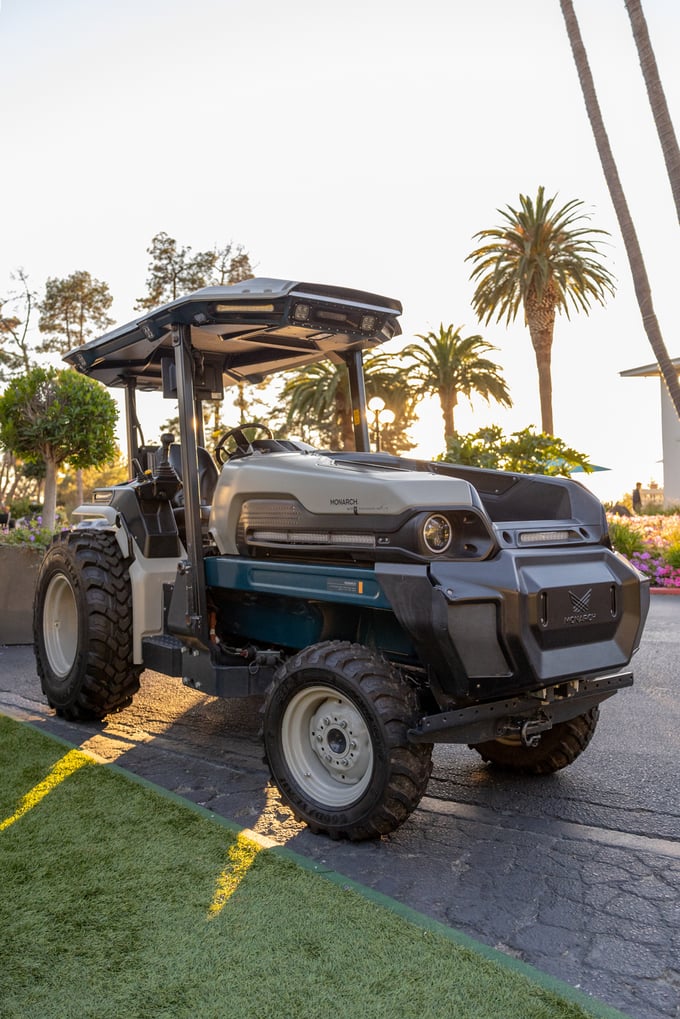In farming, where profit margins can be as thin as a hair, efficiency and productivity are not just desirable, they are absolute necessities. In the quest to strike the delicate balance between sustainability and profitability, advanced technologies such as partially or fully autonomous tractors are rising as a valuable asset.
The potential benefits of these partially or fully automated tractors extend beyond just productivity, reaching safety, sustainability, and long-term success. Exploring the role and benefits of autonomous technologies in modern farming can shed light on how this emerging tool is helping farmers meet public demands for healthier farming practices while driving increased productivity and profits.
What Is an Autonomous Tractor?
An autonomous tractor, or a self-driving tractor, is a marvel of modern technology, combining facets of artificial intelligence, robotics, 360-degree vision cameras, and global positioning system (GPS) guidance to farming operations.
A true autonomous tractor operates without a human driver, offering full autonomy in various farm tasks, from mowing to spraying. A variant of autonomy in tractors comes in the form of advanced driver assistance systems (ADAS). This form of autonomy requires that a person remain in the driver seat while the tractor automatically manages a part of the operation, such as keeping itself centered in a row with an implement, so the operator can give their full attention to the operation of the implement. Many passenger vehicles on the roads today have various ADAS features and it’s likely you’re already using this technology on a regular basis.
In farming, both variants of autonomy offer a promising future to how growers can manage their operations. True autonomous tractors have the potential to transform not just large-scale production but also the practices of fruit and vegetable farms and even dairies, bringing a touch of Silicon Valley innovation to farms across America.
For years, legacy companies have focused on solutions for large, industrial-scale farms. In a departure from this tradition, some companies, including upstarts, are reimagining the tractor to provide solutions for smaller and mid-sized farms. In December 2022, Monarch Tractor, with its MK-V, brought the world’s first fully electric, driver-optional, connected tractor with true driverless capabilities to market and is scaling to meet demand. In this move, fruit and vegetable farms now have access to advantages that have only previously been afforded to their much larger counterparts.
Autonomous tractors aren't simply a response to labor shortages in farming; they are a forward-thinking solution that empowers farmers, boosting productivity, profitability, and long-term farm sustainability. Yes, autonomous tractors are high-tech, but in the case of the MK-V, they are also familiar, designed to integrate seamlessly with current farm equipment and operations to help make farm work run smoother.
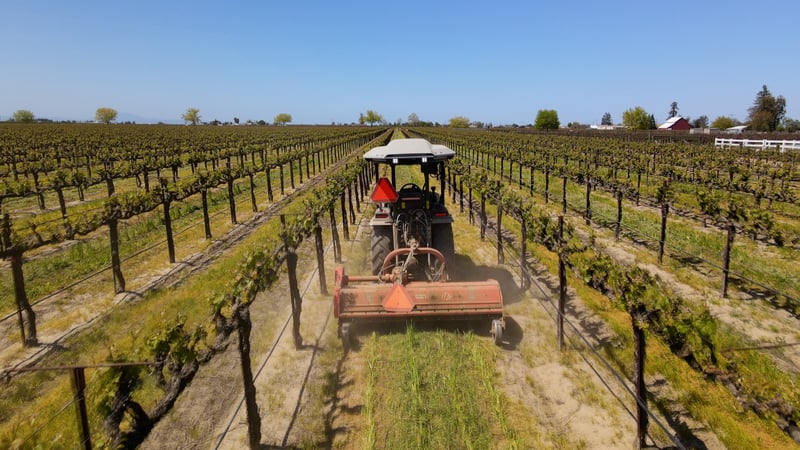
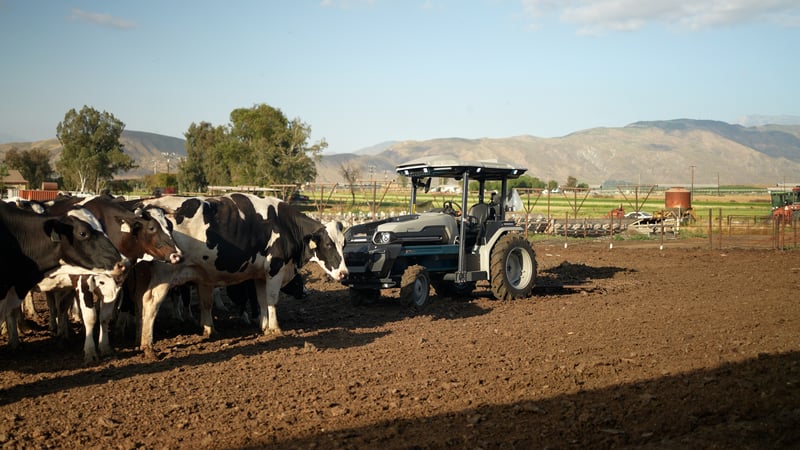
How Do Autonomous Tractors Work?
At the heart of any autonomous tractor, whether fully autonomous or ADAS, is a sophisticated blend of various cutting-edge technologies. Advancements in areas like GPS, sensor technology, and 360° vision cameras all work together harmoniously to create a robust autonomous operation system.
GPS
GPS is the backbone of an autonomous tractor's operation, providing real-time, precise location data. According to the Federal Aviation Administration, basic GPS service provides users with approximately 7.0-meter accuracy, 95% of the time, anywhere on or near the surface of the earth. It’s worth noting that Monarch Tractor’s use of GPS, ADAS, and other technologies enables the MK-V to operate with market-leading precision allowing the tractor to navigate the farmland efficiently and accurately.
Whether for tillage or managing row crops, the GPS guidance system ensures an autonomous tractor operates within its defined parameters, minimizing overlaps and providing uniform coverage.
Sensor Technology
Sensor technology incorporates the use of different types of sensors to detect key changes in the environment. This technology complements GPS, allowing the tractor to perceive its environment in real-time.
Typically used in the large tractors found on industrial-sized farms, different types of sensor technology serve different functions. Sensors can provide critical data on an array of environmental parameters ranging from soil conditions to plant health to weather conditions. Data about the health of crops and soil can be accessed from any mobile device, giving a farmer real-time data and constant health updates.
Other types of tractor sensors, such as those found in the MK-V, allow the tractor to monitor its own health, giving maintenance managers a boost in keeping the tractor in the field and out of the shop. It’s important to recognize the MK-V is an exception to the norm. The smart MK-V tractor belongs to a class of tractors that historically do not collect and communicate data sets. Fruit and vegetable farmers can now benefit from the technological advantages that have traditionally only been available to industrial-sized farms.
360° Vision Cameras
A tractor’s autonomy stack can include vision along with GPS and AI, such as with Monarch’s MK-V. Visual feedback and real-time monitoring are features of Monarch’s Wingspan Ag Intelligence (WingspanAI), a fleet management and monitoring tool giving operators a second pair of eyes to monitor the tractor remotely. The tractor’s advanced vision stack also captures live video feeds, converting them into actionable data such as monitoring crop health so a farmer can address the issue promptly. Coupled with GPS, a farmer knows exactly where a diseased plant or broken irrigation line is located.
As of summer 2023, the MK-V is the only compact tractor that can operate with or without a human driver, providing flexibility based on the farm's needs and comfort level with the technology. It's a nod to the familiarity that growers value, ensuring that adopting this new technology does not mean discarding tried and true methods.
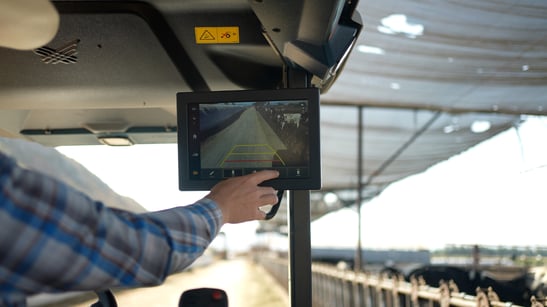
What Is the Role of Autonomous Tractors in Modern Farming?
Autonomous tractors are more than an evolution in farm equipment; they're a powerful tool in the shift towards precision agriculture. These tractors offer accuracy in farm operations, helping reduce waste and increase efficiency. The real-time data they provide can be a game-changer for farm managers, offering insights into their operations that were previously too time-consuming or cost-prohibitive to glean.
Whether it's blueberries in Florida, grapes in Oregon, or an orchard in Georgia, the potential benefits of autonomous tractors are universal to farmers of all types. As these technologies continue to evolve and improve, their role in modern farming is set to grow, helping farmers across America face the future with confidence.
What Are the Benefits of Autonomous Tractors?
Autonomous tractors are not just a technological marvel; they also bring tangible benefits to farmers, fundamentally transforming farming operations — for the better.
1. Boosting Farm Productivity & Profits
The first and most direct advantage is the significant boost in productivity. With precision agriculture becoming the norm, incorporating autonomous tractors into a farm’s fleet brings farm efficiency to the next level. Their 24/7 work capacity means that farm tasks can be completed more swiftly, increasing farm productivity. This is an especially valuable feature for dairy farms, which is a round-the-clock operation and being able to feed cows day and night can increase milk production. While the initial investment for an autonomous tractor might be higher (less so if the tractor qualifies for EV tax credits like California’s CORE program), the long-term ROI appreciates over time.
2. Providing Relief In a Tight Labor Market
Farm labor is a dwindling resource and farmers struggle to fill positions. This is especially true in the role of tractor operators, which many call dull, dirty, and dangerous work. Autonomous tractors allow one operator to monitor multiple tractors simultaneously. Operations can be executed on time. When autonomy is paired with electrification, that tractor will require less maintenance and time in the shop when compared to a conventional diesel tractor. Not only can farmers empower their operators to get more done, but they are likely to have a tractor ready to go for time-sensitive operations. And there is also the benefit of helping tractor operators gain experience in a digital environment. It becomes a transferable skill, helping them advance their own careers.
3. Helping Agriculture Meet Public Demand for Sustainability
Autonomous tractors, when they are also electric tractors, play a crucial role in helping organic and sustainable farming practices achieve cost parity with conventional practices. Their precision operations ensure optimal use of resources, reducing waste and minimizing the environmental impact of farming. Electrification, meanwhile, enables farmers to employ renewable farming practices that are critical to organic farming. This means farmers can meet the growing public demand for sustainability while enjoying the benefits of increased productivity, efficiency, and environmentally healthier farms.
4. Improving Safety
A paramount concern in the development of autonomous tractors is safety. Some autonomous tractors are equipped with advanced safety features, minimizing the risk of accidents. Monarch’s MK-V electric tractor is designed with 360º situational awareness for collision prevention, making farming operations safer for everyone involved. Plus, the MK-V features a camera above the rear power take off (PTO) which stops the tractor and automatically cuts off power to the PTO if any object or person is detected within one foot of the tractor.
Operating an autonomous tractor, especially when paired with electrification, also minimizes a driver’s exposure to various farm hazards. Because mowing can be automated, herbicide use can be reduced or eliminated. When it is needed, it can be applied with more precision or autonomously, thus limiting an operator’s exposure. Monitoring a tractor remotely also greatly reduces the risk of injury from a rollover accident. Pairing electrification with autonomy eliminates toxic diesel fumes and the health issues related to regular exposure. These tractors also run more quietly for long-term protection against hearing loss.
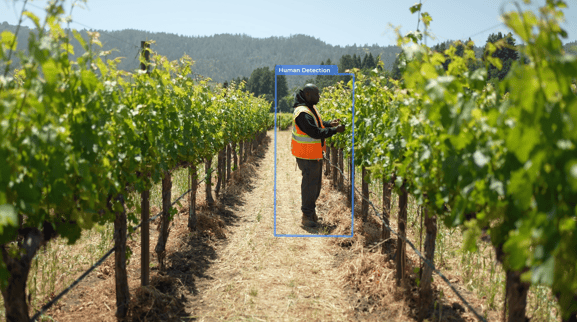
5. Securing Better Long-Term Outcomes
Adopting autonomous tractors is a step towards future-proofing farming operations. As technology continues to permeate agriculture, farmers equipped with autonomous machinery will be better positioned to adapt and thrive when all the benefits are stacked together. In the face of evolving challenges and growing demands, the farming industry recognizes that it must advance. Autonomous tractors represent a significant leap in this evolution, promising an efficient and reliable solution to many of modern farming’s biggest challenges.
The tractor is the center of all farm operations. By adopting electric autonomous tractors powered by digital AgTech solutions like Monarch’s WingspanAI, farmers are creating the basic platform needed to implement sustainable and data-driven solutions across other ag equipment. Monarch’s MK-V is designed to bridge how farmers operate today and the evolution of farming into tomorrow.
Advance Your Farm
The rise of autonomous tractors represents an exciting time for the future of farming. The horizon appears bright as we continue to innovate and develop smarter, more efficient ways to farm. At Monarch Tractor, we're proud to be part of this transformation, helping farmers maximize their productivity while promoting farming practices that make farming a financially viable and sustainable profession.
Embracing autonomous tractors is more than just adopting a new piece of technology; it's about paving the way for a more efficient, sustainable, and profitable future of farming. Let's journey into this future together.
References
Federal Aviation Administration. “Satellite Navigation - GPS - How It Works.”
https://www.faa.gov/about/office_org/headquarters_offices/ato/service_units/techops/navservices/gnss/gps/howitworks



